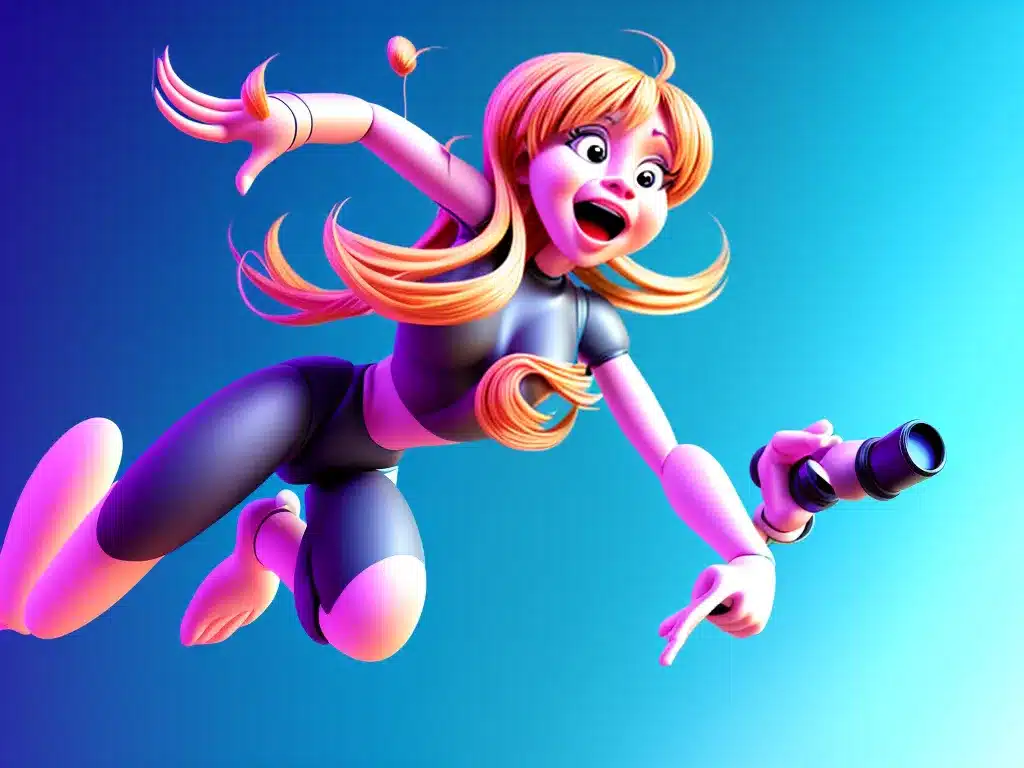
Introduction
Animation has come a long way since the early days of hand-drawn cartoons. As technology advances, animators have access to exciting new tools that allow them to push the boundaries of their craft. In this article, I will explore some of the emerging styles and techniques that represent the future of animation. There is a whole new world of possibility opening up, and I can’t wait to dive in!
New Styles
3D Animation
Once prohibitively expensive and time-consuming, 3D animation is now possible for independent animators to create on their home computers. Programs like Blender allow animators to fully model and render 3-dimensional worlds. This opens up new possibilities for creating totally immersive animated experiences.
For example, studios like Pixar have used 3D animation to great success in films like Toy Story, Wall-E, and Up. In the future, independent animators will have the same tools at their fingertips. I am excited to see how small teams or solo animators can use 3D animation to tell unique, personal stories. The expanded canvas offered by 3D presents endless possibilities.
Motion Graphics
Motion graphics involve using graphics, text, and video to create animated visual content. This style is commonly used in marketing, advertising, television, and online media.
Motion graphics are a versatile format that can incorporate many other styles like 2D animation, typography, photography and more. Popular tools like Adobe After Effects make motion graphics accessible for all levels of animators. As online video and social media continue to expand, there will be huge demand for compelling and shareable motion graphic content.
Animated Series
Streaming platforms like Netflix and YouTube have created a surge in demand for animated web series. These series are easier and cheaper to produce than traditional broadcast cartoons. This presents new opportunities for independent animators or small teams to create their own animated shows and find an audience online.
Web series allow ongoing storytelling and character development over multiple episodes and seasons. I am excited by the possibility of serialized animated storytelling aimed at adult audiences, beyond just children’s cartoons. Platforms like Netflix are already investing heavily in adult animation, and I expect the format will only continue to grow.
New Techniques
Procedural Animation
Procedural animation involves using algorithms to automatically generate animated movements and behaviors rather than hand-animating each frame. For example, physics engines can simulate forces like gravity, momentum, and collisions to animate realistic movement. Procedural techniques save vast amounts of time for animators.
Game engines like Unity are making procedural animation tools accessible to all creators. These tools can help automate mundane animation tasks like walk cycles, cloth simulation, and particle effects. Animators can focus their efforts on creativity and storytelling while leaving the meticulous work to procedural animation.
Motion Capture
Motion capture technology like facial recognition and body tracking allows animators to transfer live-action movements onto digital characters. Capturing the nuances of human and animal motion breathes life into computer animation. Motion capture data can be used as a reference or directly applied to rigged 3D models.
As motion capture tools become cheaper and more accessible, I expect more animators will incorporate motion capture into their workflows. It allows efficient animation with a naturalistic feel. Movements captured from talented actors and performers can elevate any animated work.
AI Animation
AI animation refers to using artificial intelligence tools to aid in the animation process. Developers are creating specialized AI systems that can interpolate animation between keyframes, add secondary motion to characters, and even generate new character and environment designs.
AI assistance will allow animators to work faster and more efficiently. It has the potential to significantly automate repetitive animation work. However, animators maintain creative control over the final product. I believe AI animation will become an indispensable animation tool, while human artists remain at the helm.
Conclusion
This is an incredibly exciting time to be an animator. As technology progresses, the possibilities are endless. If you are an aspiring animator, I highly recommend trying out some of these emerging styles and techniques in your own projects. Experiment, have fun, and help shape the future of animation! The power is in your hands. With some creativity and imagination, you can create absolutely anything.












